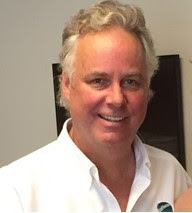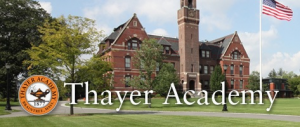July 2, 2015 – Volume 17, Issue 1: The Campus Special
In This Issue
Flanigan’s Eco-Logic
“The Universe” of U.S. Education
New England Campus Services
Thayer Academy
Moses Brown School
Saint Joseph’s College of Maine
St. Mark’s School
EcoMotion is Hiring!
The AASHE Special
Millbrook 100% Solar-Powered
Garden Grove Unified School District: A Prop 39 Success Story

Flanigan’s Eco-Logic: Circadian Correct Lighting on Campus?
EcoMotion has worked in the education sector for years, lecturing and consulting, bringing programs to campuses, training professionals for new paradigms. We focus in three areas: operational efficiency, planning and policy, and student engagement.
In terms of operations, we tighten campuses and reduce footprints through energy efficiency and solar. It’s a pleasure to work with facilities personnel and accelerate project implementation. Now our team is also focused on cutting water use. Student engagement is a forte, with a team of professionals in New England that are firing up students and administrators. We’ve recently developed a three-part series for entrepreneurs on opportunities in solar, storage, and microgrids.
As this edition features, we are delivering multi-faceted smart energy management for a large Southern California school district. It has 72 campuses and enormous opportunities for comprehensive energy efficiency retrofits, student programs, and potentially solar and storage. We’ve already secured a water-saving grant there. We also serve as energy managers for two other Southern California school districts, one with 40 sites and the other with eight sites.
This issue speaks to some of our work in New England, in New York, and in California. The work is rewarding and meaningful. We’re making a difference on campus, saving energy, money and the environment while inspiring students to be change agents. But my great friend Michael Totten was a bit disappointed in me: “You’re not using circadian-correct lighting on campuses?” Frankly, no. I’d never heard of it.
On the West Coast, EcoMotion is in the process of relighting four high schools and five elementary schools with many more to come. In each case, we’re replacing all lights with LEDs. That’s all classrooms, hallways, gyms, multipurpose rooms, and parking lots. But to the best of my knowledge, the lighting systems that we are putting in are not “circadian correct.” So I dig in. I’m still looking for marginal costs.
The rise of solid-state lighting, the rise of light emitting diodes or LEDs, enables “tunable” lighting systems. Tuning can take at least two forms: adjusting the intensity of the light and its spectral definition, i.e. its color. Medical research is finding that tunable lighting that honors circadian rhythms could enhance lighting quality, energy savings, and human health. While the goal of effective lighting has been to optimize on visual comfort, task performance, and energy savings, now we add health.
Before there were “artificial light sources,” human’s experienced a progression of different wavelengths of light during the day, beginning with short wavelength blues (460 nanometer wavelengths) in the morning, then as the sun arcs high, short wavelengths are replaced by longer wavelength light. Red-rich lighting then takes over, think sunsets and restaurant lighting.
Circadian rhythms are the physical, mental, and behavioral changes that follow a 24-hour cycle. Their primary stimulant is light and darkness. Circadian rhythms are found in most living things, animals, plants, and tiny microbes. Human eyes have photoreceptors that regulate circadian rhythms by triggering the production of neurochemicals that affect everything from sleep to moods, to the health of our immune systems.
The more I study, the more excited I get about the link between health and wellbeing and lighting. Sure, everyone wants an office with a window. It feels good. Now researchers are beginning to understand why. We want to be basked in sunlight, and sunsets. Now there is an opportunity to combine controls with drivers, and tunable LED luminaries to mimic daily patterns of natural lighting.
Consider this from Philips and its HealWell lighting systems for health care: “By mimicking natural daylight patterns in hospitals, where patients are indoors all day, artificial illumination can support a healthy sleep-wake cycle. HealWell has been designed specifically to achieve this by automatically changing the brightness and hue of the light throughout the day, reflecting the conditions outside.”
Perhaps not too distant in the future, lighting systems will be addressable and tunable. The marginal costs of tunable lighting systems will shrink and more and more of us will have “circadian-optimized light sources.” Students may be more alert; comprehension and test scores may rise. Workers may not need a second cup of coffee. Sleep patterns can be reinforced, and our moods may be better!



 Bryant University is our New England flagship. There, sustainability is treated as smart business. Our work is directed by the Vice President for Business Affairs who sees a number of benefits, and lives by the metrics. At Bryant, our team formed and continues to facilitate a fully engaged Sustainability Committee. We have published two editions of the Bryant University Sustainability Plan and we developed a rigorous Sustainability Tracking System to ensure that specific parties are held accountable for its implementation. The burgeoning Student Ambassadors program is in its third year. We were instrumental in integrating sustainability into the new, five-year dining services contract, and we recently held information sessions at new student orientation.
Bryant University is our New England flagship. There, sustainability is treated as smart business. Our work is directed by the Vice President for Business Affairs who sees a number of benefits, and lives by the metrics. At Bryant, our team formed and continues to facilitate a fully engaged Sustainability Committee. We have published two editions of the Bryant University Sustainability Plan and we developed a rigorous Sustainability Tracking System to ensure that specific parties are held accountable for its implementation. The burgeoning Student Ambassadors program is in its third year. We were instrumental in integrating sustainability into the new, five-year dining services contract, and we recently held information sessions at new student orientation. Located in the suburbs of Boston, Thayer Academy is a private, co-ed school with a colorful history. It was founded in 1871 by General Sylvanus Thayer, considered the father of West Point where both graduated and served as its superintendent, and benefactor of the Thayer School of Engineering at Dartmouth College (a $40,000 donation in 1867). The Thayer Academy was formed at the bequest of his will, now a 34-acre campus with 690 middle and high school students.
Located in the suburbs of Boston, Thayer Academy is a private, co-ed school with a colorful history. It was founded in 1871 by General Sylvanus Thayer, considered the father of West Point where both graduated and served as its superintendent, and benefactor of the Thayer School of Engineering at Dartmouth College (a $40,000 donation in 1867). The Thayer Academy was formed at the bequest of his will, now a 34-acre campus with 690 middle and high school students.



 EcoMotion salutes the Association for the Advancement of Sustainability in Higher Education (AASHE) and its leadership. We are members of AASHE for its multiple benefits. We’ve supported AASHE’s Solar Database, a rich repository of 563 installations on 327 campuses in 46 states and provinces. In the past five years, solar has grown from an aggregate capacity of less than 20 MW to over 200 MW of installed capacity today on campus. Today, AASHE reports 215,268 kW of installed capacity in its online database.
EcoMotion salutes the Association for the Advancement of Sustainability in Higher Education (AASHE) and its leadership. We are members of AASHE for its multiple benefits. We’ve supported AASHE’s Solar Database, a rich repository of 563 installations on 327 campuses in 46 states and provinces. In the past five years, solar has grown from an aggregate capacity of less than 20 MW to over 200 MW of installed capacity today on campus. Today, AASHE reports 215,268 kW of installed capacity in its online database.
